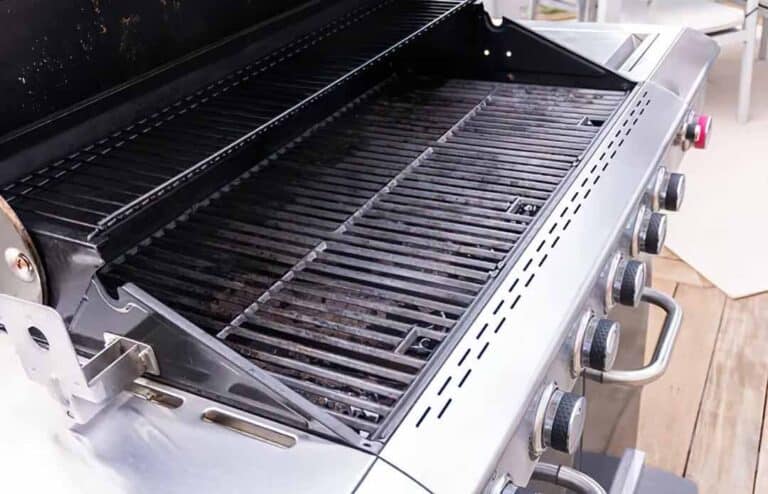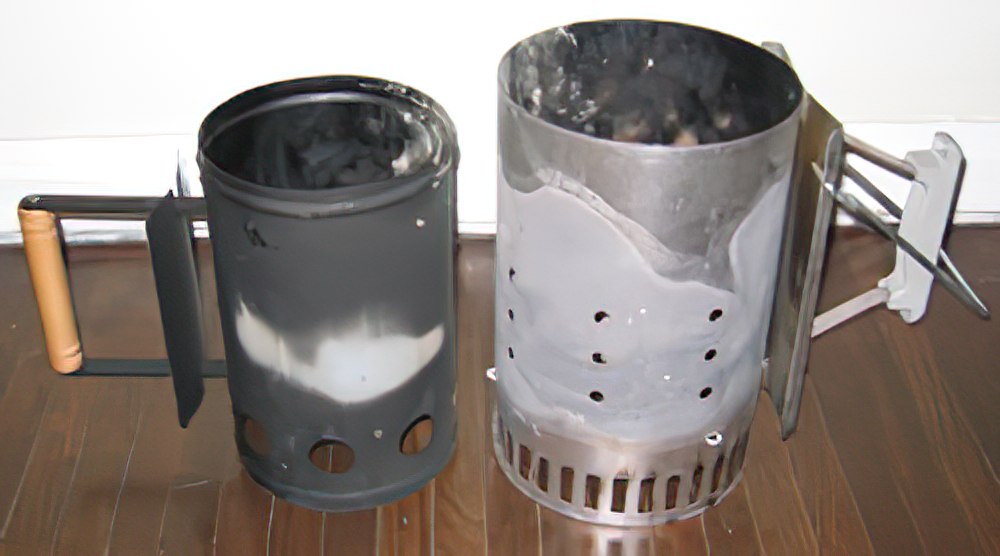

How to Use a Charcoal Chimney Starter? It’s quite easy! Learn more about Charcoal Chimney Starter.
If you’ve got to this page then you probably already know that I prefer a charcoal chimney starter for igniting briquets in the charcoal grill or barbecue. Whether using pressed charcoal briquets or hardwood lump charcoal this is one of the easiest, fastest, and most non-toxic ways to get your coals fired up and ready to grill on.
A chimney charcoal starter is basically a long metal cylinder with air vents and a large insulated handle as shown above. Inside, it has a “shelf” of metal which holds your charcoal as seen below. Your briquets go in top and some type of tinder or kindling (most commonly crumpled newspaper) is placed in the bottom and ignited. The confined space of the metal container intensifies and retains the heat and gets the lower charcoal ignited quickly. The retained heat then makes its way up, quickly igniting all the charcoal in the chimney from bottom to top.
A chimney charcoal starter can be found at specialty grill and barbecue shops. However, increasingly you can find them at anywhere charcoal and barbecue equipment are sold including hardware and home supply stores and even some supermarkets (up front with the charcoal and other grilling products).

There are several brands that make this type of charcoal starter, mostly charcoal and grill producers. They all have the same basic configuration but can vary a bit in some respects. The most common difference is that some are larger than others. I particularly like the Weber charcoal chimney because it is one of the bigger models on the market (it is the larger one in the images on this page). This is handy because if you use a larger grill you can ignite all the charcoal you need with only one load. You can always under-fill it if you need less. For very large grills you may need more than one chimney so that you can start all your charcoal at once. Alternatively, you can start one chimney full and then add additional briquets on top once you’ve poured out the burning coals. Other than size I have not noticed a significant difference in performance of different models of charcoal chimney starter. The handles vary but I have not found one to be that much more comfortable than another. However, the Weber model does have an additional pivoting metal handle to help tip the chimney easier to dump the charcoal.
For me, the chimney starter is easier to use and faster than other types of charcoal starter. It is also theoretically safer and more healthy because it does not require flammable lighter fluid or other chemicals. It is reusable, inexpensive (about $10 to $15 for most chimneys) and lasts a long time. The only downside I can see is that very rarely your charcoal does not ignite with the first try and it requires the addition of one or two more pieces of newspaper.


Be sure to check to be sure you have enough heat in your grill before cooking. A grill thermometer comes in handy for this. If you need more heat, simply add more charcoal and wait for it to ignite from the adjacent hot coals.
That’s all there is to it!
Get exclusive deals, tips, and BBQ banter—straight to your inbox.